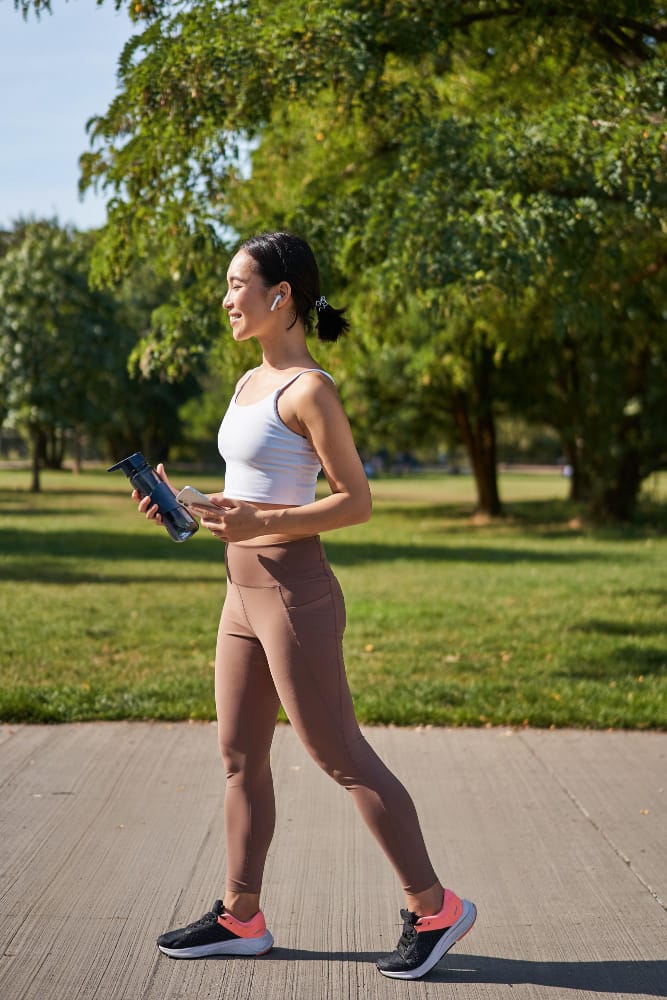FREE SHIPPING OVER $50
Harvard-Backed Japanese Walking Method That Balances Blood Sugar and Pressure Naturally

In a world filled with complex diets and high-intensity workout routines, the idea of simply walking to improve your health might seem too good to be true. But what if a simple, purposeful Japanese walking method, endorsed by leading researchers at Harvard, could be the key to naturally balancing your blood sugar and blood pressure? For many, these two conditions are silent threats that can lead to more serious issues like type 2 diabetes and cardiovascular disease. The good news is that you don’t need expensive equipment or a personal trainer to take control.
This article will pull back the curtain on a powerful, yet incredibly simple, health hack that has been gaining serious scientific attention. We’ll reveal the core principles of this Harvard-backed Japanese walking method, explain exactly why it’s so effective, and provide a clear, actionable guide so you can start putting this ancient practice to work for your modern-day health.
The Science of a Simple Walk: Why This Method Works
Before we get to the specifics of the method, it’s crucial to understand the science behind why walking is such a powerful tool for managing your health. The benefits are far more profound than you might think.
- Blood Sugar Regulation: After you eat, your body breaks down food into glucose, which enters your bloodstream. A post-meal walk is a powerful way to manage this process. As you move, your muscles use glucose for energy, effectively pulling the sugar out of your bloodstream. This helps prevent a rapid spike in blood sugar and makes your body more sensitive to insulin over time. This increased insulin sensitivity is the key to preventing and managing type 2 diabetes.
- Blood Pressure Management: Walking is a form of cardiovascular exercise that strengthens your heart. A stronger heart can pump blood more efficiently and with less effort. This reduces the force on your artery walls, which directly leads to lower blood pressure. A consistent walking habit also promotes the production of nitric oxide, a compound that helps relax your blood vessels, further contributing to a healthy blood pressure.
- Stress Reduction: Walking, especially outdoors, can significantly reduce stress. Chronic stress is a major contributor to high blood pressure and poor blood sugar control. By taking a simple walk, you are not only helping your physical body, but you are also giving your mind a break, which has a direct, positive impact on your health.
The Harvard-Backed Japanese Walking Method
This isn’t just about going for a stroll. This Japanese walking method is a purposeful, scientific approach to health that is surprisingly easy to adopt. It was developed by Japanese researchers and has been praised by experts like Dr. Sarah Eby, a professor of medicine at Harvard Medical School. The method focuses on three key components: timing, tempo, and technique.
1. The “Post-Meal Rule”
The single most important principle of this method is the timing of your walk. The most effective time to walk for balancing blood sugar is immediately after a meal, especially one that is high in carbohydrates. A 10 to 15-minute walk after eating can have a significant impact, as your muscles are most receptive to absorbing glucose from your bloodstream at this time. Making a post-dinner walk a non-negotiable part of your routine is one of the easiest and most powerful changes you can make to your metabolic health.
2. The “Tempo Change”
This method moves beyond the gentle stroll. It incorporates a form of interval training that provides greater cardiovascular health benefits without the high-intensity stress of running. The method calls for alternating between periods of a fast walk and a slow walk. A common breakdown is:
- Walk at a normal pace for a few minutes to warm up.
- Then, walk at a quick pace for 3 minutes, as if you’re trying to catch a bus. Your breathing should be a little labored, but you should still be able to hold a conversation.
- Follow that with 3 minutes of slow, relaxed walking.
- Repeat this cycle 5 times for a total of 30 minutes.
This tempo change stimulates your muscles and blood vessels more effectively, which is a key reason for the method’s proven ability to lower blood pressure and improve blood sugar levels.
3. Posture and Purpose
The final component of this Japanese walking method is about being mindful of your body. It encourages you to walk with a straight posture, chest lifted, and a purposeful gait. Instead of just ambling along, you are engaging your entire body with every step. This not only burns more calories but also improves your core strength and helps you develop a better sense of balance. The method emphasizes that every step matters, and by walking with purpose, you are signaling to your body that you are actively engaging in your own well-being.
Putting It All Together: Your Daily Action Plan
You can start benefiting from this Harvard-backed method today. Here is a simple plan to make it a part of your daily routine:
- When to Walk: Start with a 15-minute walk after your biggest meal of the day. A post-dinner walk is a great way to unwind and get your steps in.
- How to Walk: Begin your walk with 5 minutes of a gentle pace to warm up. Then, try the tempo change: 3 minutes of fast walking, followed by 3 minutes of slow walking. Repeat this fast-slow cycle as many times as you can for your 15-minute total. As you get more comfortable, you can increase your walk to 20 or even 30 minutes.
- Making It a Habit: Put on your favorite podcast or an audiobook. Invite a family member or a friend to join you. Setting a specific time and making it an enjoyable part of your day is the key to consistency.
Final Thoughts
The secret to a healthier, more vibrant life is not a complicated formula. It’s found in simple, actionable habits that are backed by science. The Japanese walking method, with its focus on timing and purposeful movement, is a powerful example of this. Backed by the research of top institutions like Harvard, this method proves that you have the power to naturally lower your blood sugar and blood pressure. So, put on your shoes, step outside, and start walking your way to a stronger, more resilient you.
Related Articles
- Want Long, Lean Legs? These 5 Pilates Moves Are a Ballet Dancer’s Secret Weapon
- 10 Powerful Exercises That Fight Frailty and Keep You Moving Strong After 50
- These Women Over 60 Got Stronger, Healthier, and Happier—Thanks to Lifting Weights
- Get Shredded in 12 Weeks: The Ultimate Program to Stay Jacked Through 2025
- Want Bigger Gains in Less Time? This Workout Hack Cuts Your Gym Time by 40%







